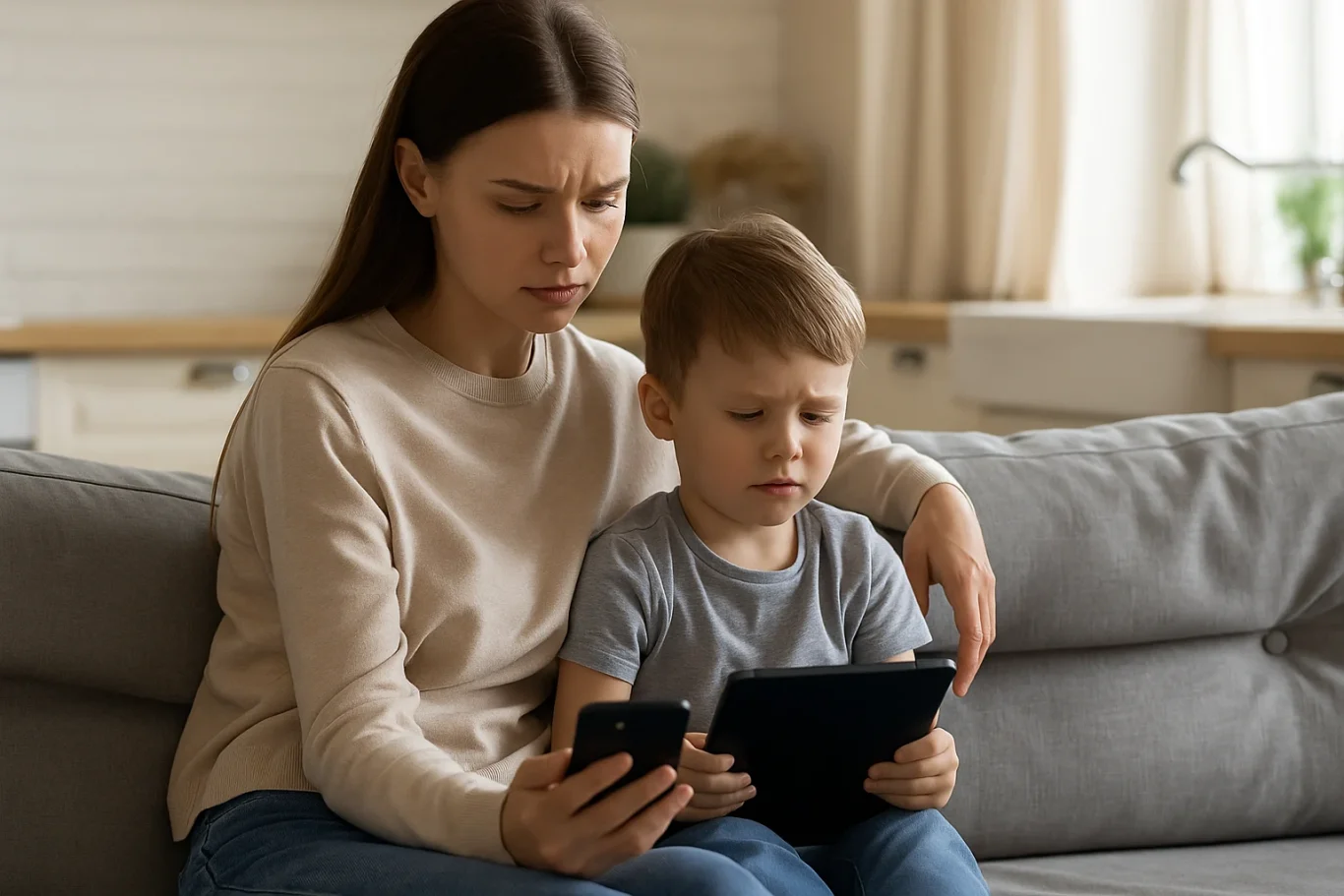Age Limit for Children Using Gadgets: When Is the Right Time?
In today’s digital age, gadgets have become an inseparable part of daily life. Children are increasingly exposed to smartphones, tablets, and laptops from a very young age. This growing trend raises a crucial question for parents: what is the ideal age limit for children using gadgets?
This question does not have a one-size-fits-all answer, as every child develops at their own pace. However, understanding the basic principles of when and how children should be introduced to gadgets is essential for developing healthy digital habits.
Why Setting an Age Limit Matters

Research shows that excessive gadget use at an early age, especially without supervision, can negatively affect a child’s cognitive, emotional, and social development. Therefore, setting an age limit for children using gadgets is not about banning technology entirely. Rather, it’s about protecting children and guiding them during their growth years.
Children who spend too much time on gadgets may experience sleep disturbances, delayed speech development, or even early signs of screen addiction. That’s why it’s important for parents to know the right time to introduce gadgets and how to direct their usage in a positive way.
Expert Recommendations
Child development organizations such as the American Academy of Pediatrics (AAP) offer clear guidelines on the age limit for children using gadgets:
- 0–18 months: Avoid screen exposure except for video calls with family members.
- 18–24 months: If introducing gadgets, ensure the content is high-quality and that parents are present to assist and explain.
- 2–5 years: Limit screen time to one hour per day, focused on educational content.
- 6 years and older: Begin to teach children about screen time boundaries, digital responsibility, and the importance of physical activity.
These recommendations can serve as a helpful starting point for parents to develop digital guidelines at home.
When Is a Child Ready for Their Own Gadget?

Beyond the question of screen time, many parents also wonder when it’s appropriate for children to have their own gadget. This goes beyond just age. The age limit for children using gadgets should take into account emotional maturity and responsibility.
Here are a few things to consider before handing over a personal device:
- Has your child demonstrated a clear understanding of rules and limits?
- Can your child take care of their belongings responsibly?
- Does your child use digital tools for learning or productive activities?
If your answers are mostly yes, it may be time to consider allowing a child to own a device, provided you set clear boundaries and maintain active supervision.
The Role of Parents in Digital Guidance

Establishing the age limit for children using gadgets is only effective if parents are actively involved in the process. It’s not just about creating rules. Parents should model good behavior by managing their own screen time and encouraging healthy tech habits.
Use this opportunity to teach your children about digital literacy, including internet safety, online etiquette, and the importance of taking regular screen breaks. Additionally, promote offline activities like reading, outdoor play, and creative hobbies to create a more balanced lifestyle.
Using Gadgets for Positive Purposes

Gadgets are not inherently bad. When used properly, they can be powerful tools for learning and creativity. There are numerous educational platforms and apps designed specifically to enhance children’s knowledge and skills.
That’s why the age limit for children using gadgets should be complemented by introducing them to productive tech-based activities like learning coding, animation, or basic digital design. When children use gadgets to create and explore, they develop valuable 21st-century skills while staying engaged in meaningful ways.
Responsible Tech Starts with Age-Appropriate Use

Ingin tahu detail program?
Understanding the age limit for children using gadgets is a foundational step in fostering healthy digital habits at home. While each family’s approach may differ, the underlying principles remain the same: supervision, clear time limits, and age-appropriate content.
As parents, our role is not to fear the digital world, but to prepare our children for it with wisdom, support, and education.
Would you like your child to use gadgets for something truly meaningful? Sign up for a free trial at Timedoor Academy, where your child can learn coding and digital skills in a fun, structured, and educational environment.